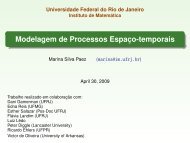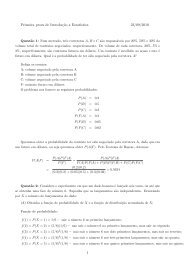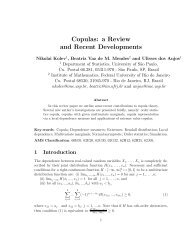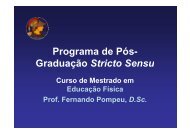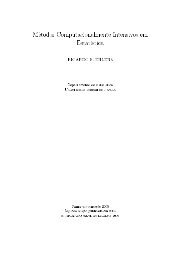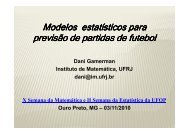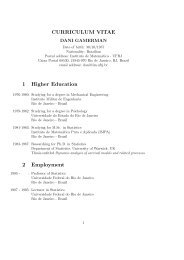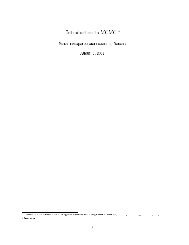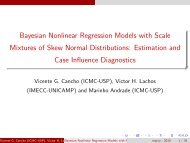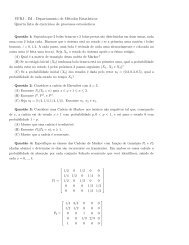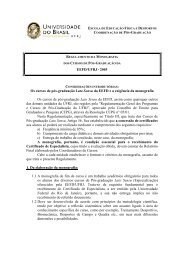Untitled - UFRJ
Untitled - UFRJ
Untitled - UFRJ
Create successful ePaper yourself
Turn your PDF publications into a flip-book with our unique Google optimized e-Paper software.
Forward-Backward Study of the Stereo Vision Problem: A NewApproach to Solve Belief Propagation on Loop GraphsFortunato Silva de MenezesDepartamento de Ciências Exatas,Universidade Federal de Lavras, BrasilDavi GeigerCourant Institute of Math Sciences,Department of Computer Science, New York University, USAMário Javier Ferrua VivancoDepartamento de Ciências Exatas,Universidade Federal de Lavras, BrasilRicardo Martins de Abreu SilvaDepartamento de Ciência da Computação,Universidade Federal de Lavras, BrasilIn stereo vision a pair of two-dimensional (2D) stereo images is given and the purpose is to find outthe depth (disparity) of regions of the image in relation to the background, so that we can reconstructthe 3D structure of the image from the pair of 2D stereo images given. Using the Bayesian framework weimplemented the Forward-backward algorithm to unfold the disparity (depth) of a pair of stereo images.The results showed are very reasonable, but we point out there is room for improvement concerningthe graph structure used. One possible extension we are currently working on is the implementation ofForward-backward algorithm on a tree structure, to take into account the interaction among the epipolarlines of the pair of stereo images. This approach enhance the results in several time scales (i.e., it ismuch faster than the original one, which does not take advantage of computed transition probabilities inprevious pixels) and resolution (i.e., it improves the depth (disparity) range) of the images. Preliminarresults are showed in this work.99



